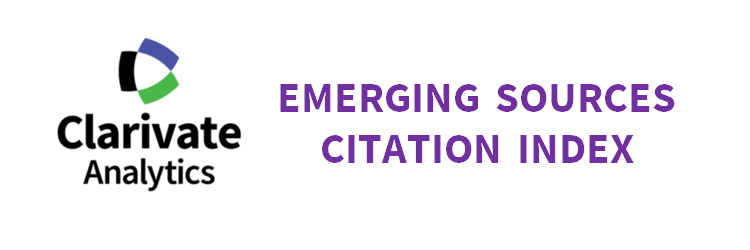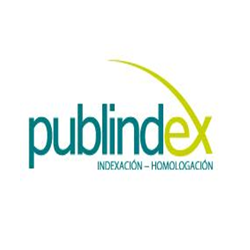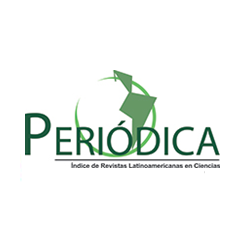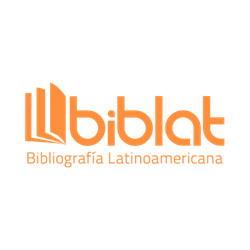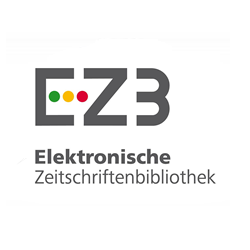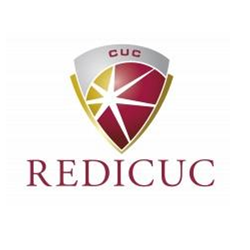Performance of an Upflow anaerobic sludge blanket reactor for hospitals’ wastewaters treatment in Colombia: A preliminary study
DOI:
https://doi.org/10.17981/ingecuc.17.1.2020.04Keywords:
anaerobic digestion, recalcitrant compounds, UASB, water treatmentAbstract
Introduction— The hospitals’ wastewater is considered harmful to the environment and public health, which demands the utilization of proper treatment systems to manage the pollutants in them.
Objectives— This study evaluated the performance of an anaerobic reactor Upflow Sludge Blanket (UASB) to treat real Hospitals’ Wastewater (HWW).
Methodology— The reactor operated for 145 days with variations of the amount of Organic Load Rate (OLR).
Results— The results showed that for mean organic load rate (OLR) of 0.950 Kg COD/m3 ∙ d the removal efficiency of organic matter was 59% ± 14%, however, the process was unstable and showed low methane gas production.
Conclusions— As a result, this research found that UASB standard systems are not reliable and proper treatment technologies y for treating organic pollutants of hospitals’ wastewater.
Downloads
References
P. Verlicchi, A. Galletti, M. Petrovic & D. Barceló, “Hospital effluents as a source of emerging pollutants: An overview of micropollutants and sustainable treatment options,” J Hydrol, vol. 389, no. 3–4, pp. 416–428, Aug. 2010. https://doi.org/10.1016/j.jhydrol.2010.06.005
P. Verlicchi, M. Al Aukidy & E. Zambello, “What have we learned from worldwide experiences on the management and treatment of hospital effluent? - An overview and a discussion on perspectives,” Sci Total Environ, vol. 514, pp. 467–491, May. 2015. https://doi.org/10.1016/j.scitotenv.2015.02.020
J. B. Palter, I. Marinov, J. L. Sarmiento & N. Gruber, “ Large-Scale, Persistent Nutrient Fronts of the World,” The Handbook of Environmental Chemistry. HDB: Springer, pp. 1–38, 2006. https://doi.org/10.1007/698_2013_241
P. Verlicchi, M. Al Aukidy, A. Galletti, M. Petrovic & D. Barceló, “Hospital effluent: Investigation of the concentrations and distribution of pharmaceuticals and environmental risk assessment,” Sci Total Environ, vol. 430, pp. 109–118, Jul. 2012. https://doi.org/10.1016/j.scitotenv.2012.04.055
N. A.Khan, S. U. Khan, S. Ahmed, I. H. Farooqi, M. Yousefi, A. A. Mohammadi & F. Changani, “Recent trends in disposal and treatment technologies of emerging-pollutants- A critical review,” TrAC - Trends Anal Chem, vol. 122, 2020. https://doi.org/10.1016/j.trac.2019.115744
P. Gupta, N. Mathur, P. Bhatnagar, P. Nagar & S. Srivastava, “Genotoxicity evaluation of hospital wastewaters,” Ecotoxicol Environ Saf, vol. 72, no. 7, pp. 1925–1932, Oct. 2009. https://doi.org/10.1016/j.ecoenv.2009.05.012
X.W. Wang, J. Li, T. Guo, B. Zhen, Q. Kong, B. Yi, Z. Li, N. Song, M. Jin, W. Xiao, X. zhu, C. Gu, J. Yin, W. Wei, W. Yao, C. Liu, J. Li, G. Ou, M. Wang, T. Fang, G. Wang, Y. Qiu, H. Wu, F. Chao & J. Li, “Concentration and detection of SARS coronavirus in sewage from Xiao Tang Shan hospital and the 309th Hospital of the Chinese People’s Liberation Army,” Water Sci Technol, vol. 52, no. 8, pp. 213–221, 2005. https://doi.org/10.2166/wst.2005.0266
International Water Association -IWA, “Water utility managers, water professionals,” in COVID-19: A Water Professional’s Perspective. LDN, UK: IWA, 2020.
S. Aydin, B. Ince & O. Ince, “Inhibitory effect of erythromycin, tetracycline and sulfamethoxazole antibiotics on anaerobic treatment of a pharmaceutical wastewater,” Water Sci Technol, vol. 71, no. 11, pp. 1620–1628, 2015. https://doi.org/10.2166/wst.2015.126
X. Shi, K. Y. Leong & H. Y. Ng, “Anaerobic treatment of pharmaceutical wastewater: A critical review,” Bioresour Technol, vol. 245, no. Part A, pp. 1238–1244, Dec. 2017. https://doi.org/10.1016/j.biortech.2017.08.150
S. Chelliapan & P. J. Sallis, “Removal of organic compound from pharmaceutical wastewater using advanced oxidation processes,,” J Sci Ind Res (India), vol. 72, no. 4, pp. 248–254, Apr. 2013. Available: http://hdl.handle.net/123456789/16874
C. E. M. Ortiz & T. R. Chaparro, “Combination of advanced oxidation process and anaerobic process for hospital wastewater treatment,” Afinidad, vol. 71, no. 565, pp. 63–67, 2014. Disponible en https://raco.cat/index.php/afinidad/index
E. de Sousa & J.T and Foresti, “Domestic sewage treatment in an upflow anaerobic sludge blanket - sequencing batch reactor system,” Water Sci Technol, vol. 33, no. 3, pp. 73–84, 1996. https://doi.org/10.1016/0273-1223(96)00323-X
APHA (American Public Health Association), Standard Methods for examination of water and wastewater, 22 ed, Wa, USA.: APHA, 2012.
L. E. Ripley, W. C. Boyle & J. C. Converse , “Improved alkalimetric monitoring for anaerobic digestion of high-strebgth wastes,” J Water Pollut Control Fed, vol. 58, no. 5, pp. 406–411, 1986. Available: https://www.jstor.org/stable/25042933
C. Chernicharo, Anaerobic Reactors. LDN, UK: IWA Publishing, 2007.
P. Verlicchi, M. A. Aukidy, A. Galletti, M. Petrovic & D. Barceló, “Hospital effluent: Investigation of the concentrations and distribution of pharmaceuticals and environmental risk assessment,” Sci Total Environ, vol. 430, pp. 109–118, Jul. 15, 2012. https://doi.org/10.1016/J.SCITOTENV.2012.04.055
J. S. González, A. Rivera, R. Borja & E. Sánchez, “Influence of organic volumetric loading rate, nutrient balance and alkalinity: COD ratio on the anaerobic sludge granulation of an UASB reactor treating sugar cane molasses,” Int Biodeterior Biodegradation, vol. 41, no. 2, pp. 127–131, 1998. https://doi.org/10.1016/S0964-8305(98)00003-1
A. P. Buzzine & E. C. Pires, “Cellulose pulp mill effluent treatment in an upflow anaerobic sludge blanket reactor,” Process Biochem, vol. 38, no. 5, pp. 707–713, Dic. 2002. https://doi.org/10.1016/S0032-9592(02)00190-5
A. Rezaee, M. Ansari, A. Khavanin, A. Sabzali & M. M. Aryan, “Hospital Wastewater Treatment Using an Integrated Anaerobic Aerobic Fixed Film Bioreactor,” Am J Environ Sci, vol. 1, no. 4,pp. 259–263, Dec. 2005. https://doi.org/10.3844/ajessp.2005.259.263
E. Foresti, M. Zaiat & M. Vallero, “Anaerobic processes as the core technology for sustainable domestic wastewater treatment: Consolidated applications, new trends, perspectives, and challenges,” Rev Environ Sci Biotechnol, vol. 5, no. 1, pp. 3–19, Feb. 2006. https://doi.org/10.1007/s11157-005-4630-9

Published
How to Cite
Issue
Section
License
Copyright (c) 2020 INGE CUC

This work is licensed under a Creative Commons Attribution-NonCommercial-NoDerivatives 4.0 International License.
Published papers are the exclusive responsibility of their authors and do not necessary reflect the opinions of the editorial committee.
INGE CUC Journal respects the moral rights of its authors, whom must cede the editorial committee the patrimonial rights of the published material. In turn, the authors inform that the current work is unpublished and has not been previously published.
All articles are licensed under a Creative Commons Attribution-NonCommercial-NoDerivatives 4.0 International License.


 English
English
 Español (España)
Español (España)
